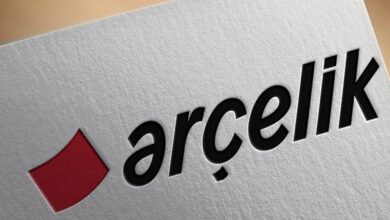How to Create an Institutional Identity?

Greetings, my dear readers. I hope everything is going well for you. After a brief intermission, I’m back with a topic that I think is important. Currently , everyone pays close attention to a wide range of topics, and companies that want to have a strong presence in the business world place a high value on the issue of institutional identity. Therefore, one of the most researched topics is “How to create an institutional identity?” Let’s take a closer look at this issue and touch on the answer to this question. If you are ready, here we go!
First of all, let me say that this post is a little longer than usual, which is related to the corporate identity that makes a company a brand and adds quality to it. So, take your coffee or tea and enjoy your time.
I’m sure you ask, “What is this corporate identity, and why are we devoting so much work to it?” Just as we might form an opinion about a person on the first meeting, our brains do the same with companies. Thus, “corporate identity” must refer to all of the work done to ensure that the customer identifies the company at a glance, both inside and outside the company, and that the company’s mission can be defined.
When the names mentioned as the greatest in the world are considered, a number of visual elements automatically come to life in the mind. For some companies, these components are so prominent that, as soon as they are noticed, they conjure up associations that go well beyond the industry or line of products that the company sells. Symbols such as a bitten apple, a name made up of colorful letters, or an open-mouthed crocodile are enough for most people to identify the Apple, Google, and Lacoste brands. So, how is this perception established? What strategy did the brands adopt to achieve this level of awareness? There is essentially a single and clear answer to these problems: corporate identity, created through painstaking and time-consuming efforts!
Furthermore, corporate identity creates a more secure impression and a positive preconception because it makes the company appear professional. In one of my previous articles, I mentioned the importance of the logo. One of the most significant aspects of developing an institutional identity is the logo design, which includes the company’s name and symbol. Aside from these, all additional visual communication items should be designed in accordance with the logo design.
Why the Corporate Identity is quite Important?
Corporate identity is also highly significant since it makes the organization visible and raises customer awareness. I would like to remind you how important advertising work is for companies and that the most basic advertising work is corporate identity. It is nearly impossible for a company that does not have a corporate identity to promote itself and expand.
If you design your corporate identity correctly, you will both make a good impression on customers and improve your marketing activities because you manage to be memorable. What is our first goal? To increase sales no matter what sector we are in. The main way to increase sales is through corporate identity. In your first contact with the customer, you will leave either a positive or negative impression on the consumer’s mind. There is no third possibility, either good or bad. This, of course, further increases the importance of corporate identity. It is considered one of the most important points in both brand awareness and customer loyalty.
How to Create an Institutional Identity?
I mentioned earlier why this corporate identity is so important. Now, it is time to talk about “Which steps should be taken when creating a corporate identity?”
Firstly, you should determine the color of your company. At this point, you also should be careful that there is no association between the colors that you’ve chosen and other companies. Who wants their customers to associate another company with a color that they use throughout their company?
Secondly, create your logo and specify a logotype. In another article, I addressed what a logo is and why it is important. I suggest you take a look at the topic again. Let’s go back to the “Logotype.” The font you will use in your logo is called logotype. To be more memorable in your mind, I’d like to use the example of Coco-Cola. Coco-Cola, which has used a variety of designs over the years, is still memorable in some way, and its logo and logotype are visible in the background.
The logo and logotype, two of the most important elements that comprise corporate identity, are critical issues that must be dealt with. Because it is these two characteristics that distinguish the institution. Keep in mind that the most significant events are often hidden in the details. Work with people who are knowledgeable about their sector when developing a corporate identity and who are willing to spend hours even designing a business card. If you don’t think about it thoroughly and do something random, unfortunately, you may make mistakes that cannot be corrected.
Remind Yourself of These to Create a Successful Corporate Identity!
Remember what your mission is and think again about why you founded the company. Keep in mind the principles you will uphold as you establish the company. Find the features that set you apart from the sector’s competitors. Examine the points that are unique to your business and that make you stand out in the marketing industry in your interactions with others. Finally, summarize your company in three words and focus on the jobs you are most confident in.
Is a Corporate Identity Changeable?
As a business owner, it is beneficial to collaborate with experts in your sector when developing a corporate identity. because completely changing the corporate identity in the future may be detrimental to you. Instead of starting from scratch, small touches and changing details refresh your prestige over time. Corporate identity does not change over time; it is only updated. Because corporate identity is the institution’s signature and face, you should choose the identity that best represents your own company.
To summarize, corporate identity will be a kind of institutional signature, and people will identify the company with this identity from the moment it is used. As a result, establishing your identity correctly the first time, meeting with the customer, and staying on target should be among your top priorities.
What does the corporate identity range involve?
1) A slogan is a broad phrase that captures the essence of a business or product.
2)Corporate Printing: Company tools such as business cards, booklets, postcards, and envelopes
3) Workplace uniforms
4) A company’s website or blog
5) A smartphone application
6) Advertising on outdoor advertising elements (such as panels and transportation).
7) Commercial packaging (materials, visual elements, and writings)
8)Gift items (pens, notebooks, mugs, etc.)
9)Photos (products, indoor areas, customers)
What are the Stages of Creating a Corporate Identity?
I previously stated that developing a corporate identity is a long and difficult process. In other words, it is not a simple and quick process that can be completed in a single stage. This process is divided into four stages. Each stage is interrelated and requires concentration, much the same as walking on ice.
First, I’d like to look at the design process. At this stage, the brand owner shares the image he/she wishes to project with the design team, and the design team presents their plans to the brand owner and receives approval. A corporate identity guide is determined at this stage. Because it is the first stage, it is crucial that both parties communicate clearly and entirely and that they fully comprehend one another.
The second stage is timing . At this stage, the main responsibility actually lies with the design team. It should be worked out by adapting to the dates stipulated within the established plan. Additionally, trends should be observed and their context in time should be taken into consideration. To avoid projecting an outdated, old-fashioned image of the brand, everything should be done with care.
The presentation stage is the most important stage, actually. During this process, the owner of the institution is given a detailed explanation of all the corporate identity materials that the design team has created and asked for their opinion. It is crucial that all the materials are ready at this time in order to present a comprehensive image of the brand. Making an incomplete presentation makes the team appear inexperienced, which leads to uncertainty and mistakes. So if you’re on the presentation team, I advise you to double-check your gear on the way to the presentation.
The correction stage is the final stage of our process. Even if every step is completed correctly at this point, it’s very common for the brand to want to revise or improve. These requests should be carefully considered and listened to by the design team. The designers have finished all the work and directed it to all the required channels after reviewing the work and translating it into the desired state.
Although it is the last, it is an endless stage. Because even if all the necessary arrangements are made, there may be a problem again every time, or those who decide on behalf of the company may not like it.
Which Brands Are an Example of Corporate Identity?
After taking all these steps, I wouldn’t want to leave you without mentioning a few companies that are the industry leaders. Our first example is Amazon, a well-known company whose corporate identity and logo both serve as shopping cues. This business, which is still the best in its industry despite having a lot of rivals, has proven its success through its corporate identity. With the arrow mark extending between the letters A and Z, Amazon’s logo has managed to become one of the most meaningful. Also, the goal of the Amazon company is to satisfy every customer.
Coca-Cola, as we all know, is another entrepreneurial leader! It stands out thanks to its remarkable bright red and white color scheme and the prominent placement of recognizable italic letters in its logo. Coca-Cola, which prints its logo on every bottle it makes, pays attention to both the bottle and the logo. It is a company that, thanks to its distinctive, beautifully designed bottle, can be recognized even without its logo. Corporate identity has been incredibly important to this brand. From large billboards to the clothing worn by his employees, he prints his logo everywhere.
My final example is Heineken, a beer company that has gained worldwide recognition for its alcoholic beverages. This beer brand’s logo, which can be found all over the world, uses the color and shape it chooses to create an eye-catching image and corporate identity.
I’m ending my post here. I have tried to explain to you the corporate identity structure in all its details, as well as how it should be and what factors should be taken into account when developing a corporate identity. I hope it was beneficial for you. Take very good care of yourself. I hope to see you in the next article…













